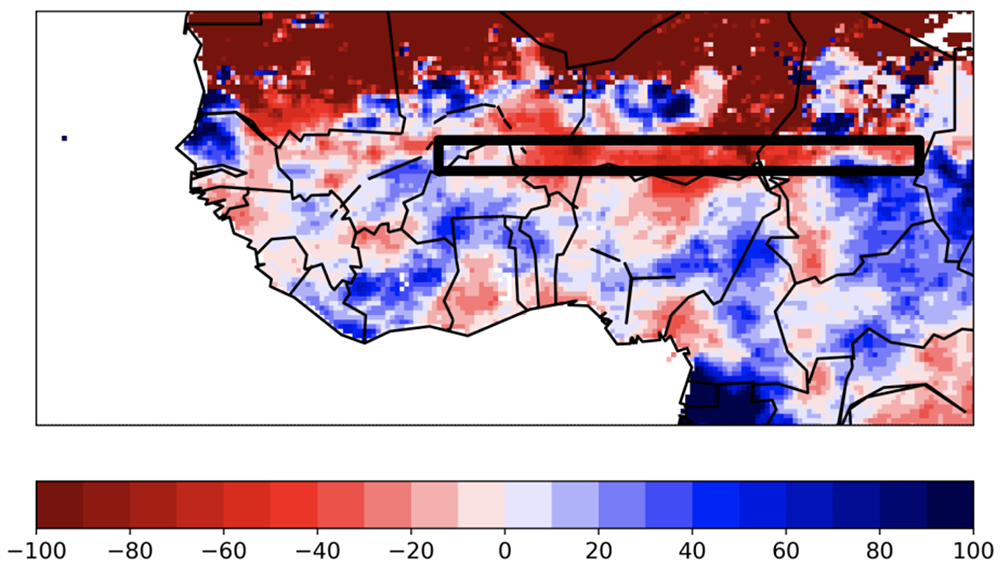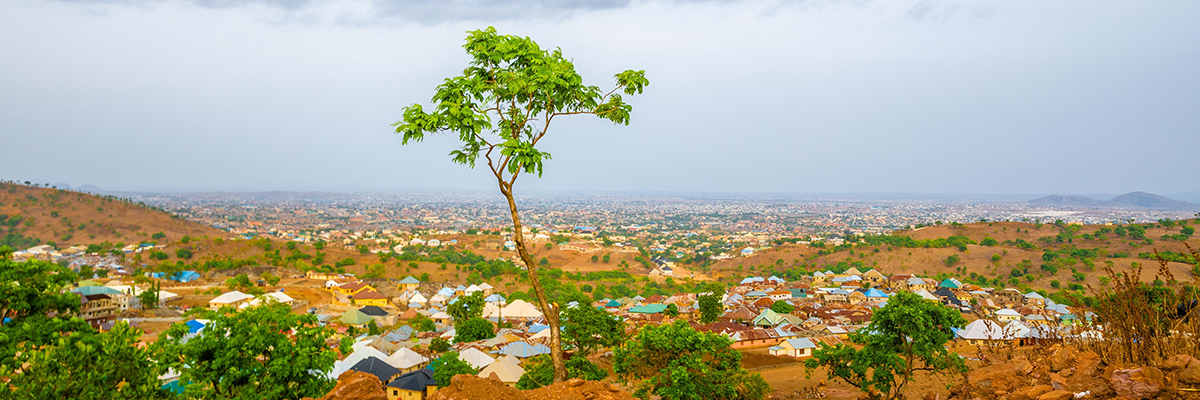At the beginning of April 2022, alerts about food insecurity were raised in several countries of West Africa (Burkina Faso, Chad, Mali, Niger, Nigeria). This food shortage occurred after an erratic rainy season in 2021 which affected crop production and reduced food stocks several months later. Sowing dates were reportedly delayed by more than 15 days between June and July 2021 in southern Mauritania, central Mali, southern Niger and central Chad (mostly for millet and sorghum) as less than 40% of crop water needs could be satisfied by 31 August 2021.
In this semi-arid region, the economy largely relies on rain-fed agriculture and pastoralism, and recurrently suffers from drought consequences which are compounded by other socio-economic factors including the war in Ukraine, follow-up impacts of the COVID pandemic on energy and crop prices, conflicts inducing population displacements and political unrest.
Scientists from Burkina Faso, France, Germany, the Netherlands, Sweden, the U.K., and the U.S. used published, peer-reviewed methods to estimate whether climate change was also a driver of the short rainy season and the delayed rainfall onset in the preceding year, 2021, leading to the current food crisis. Three characteristics over the Central Sahel region [3°W,24°E ; 14°N,16°N], shown in Figure 1, are chosen to represent impact-relevant aspects of the drought: (1) the precipitation amount in June, (2) the onset of the rainy season and (3) the duration of the rainy season.

Main findings
- A large part of the population of Central Sahel strongly depends on the annual rains and is thus chronically vulnerable to deviations from a normal season (e.g., delay in the onset of the rainy season, dry period within the rainy season, early end, etc);
- Rainfall during the wet season (June to September) in Central Sahel is highly variable from year to year, rendering sowing dates and crop development subject to large variations and significant unreliability;
- In 2021 the wet season started late in the Sahelian regions of Niger and Chad and was followed by a short – albeit intense – wet period, and a dry September. These dry months within the rainy season occurred during critical development stages for the rain-fed crops. In Niger and Burkina Faso production dropped by 36% and 10% compared with the previous five-year average, leading, in combination with other factors including the Ukraine war, to food insecurity in several countries (from Mali to Chad);
- Using three observational data sets and three indices of the characteristics of the wet season (total rainfall in June, onset, and duration), we found anomalies in the observations of all three indices, but these anomalies were not rare: the late onset and shortness of season both have a return period of about 3 years, and the low precipitation amount about 10 years. These results have relatively large uncertainties (typically a [1.5 – 13] year range) due to the high variability, the short span of datasets (~40 years) and differences across datasets used;
- From these three indices, we could not detect significant trends or a climate change influence in the 2021 rainy season. However, the large uncertainties in the observational data and subsequent difficulties in assessing climate models mean it is not possible to assess whether there is no climate change signal or whether we cannot detect it.
- To understand the influence of climate change on drivers of droughts in the region, and thereby rain-fed agriculture it is key to invest in and maintain a network of rain gauges.
- The chronic food insecurity and vulnerable economic situation of many in the region, means that even small shifts in rainfall (drought or floods) cascade and impact the already limited food supply in the Sahel. Increasing conflict and its impact on people (e.g. displacement, limiting agricultural activity and access to markets) and state fragility are also major contributors. However, food security in the Sahel is not only dictated by local factors. High global food prices exacerbate food insecurity and render the region vulnerable to future impacts of climate change on global breadbaskets.





